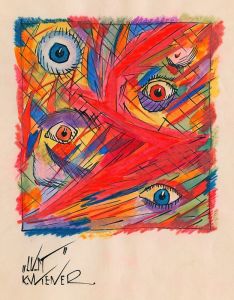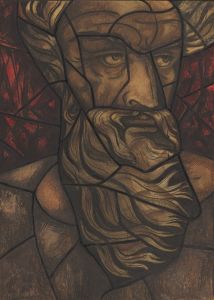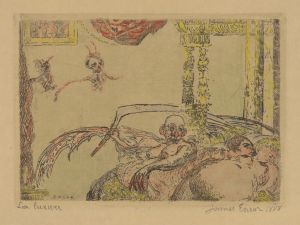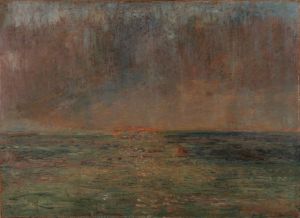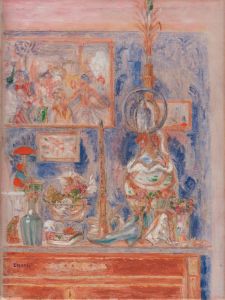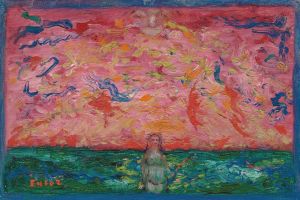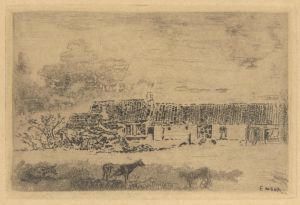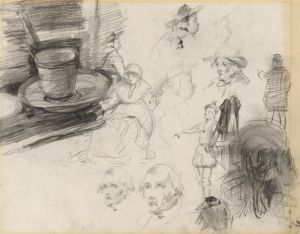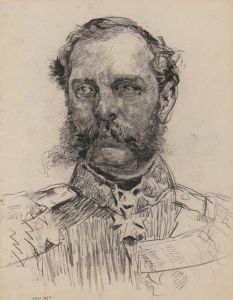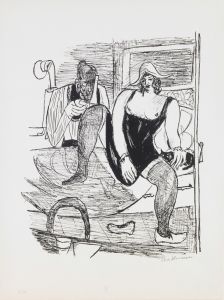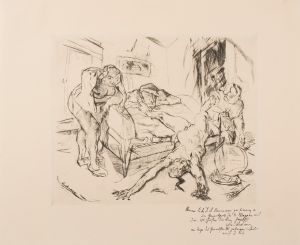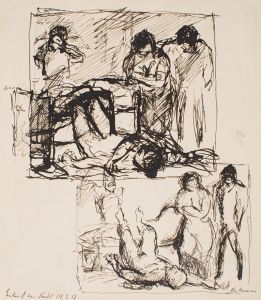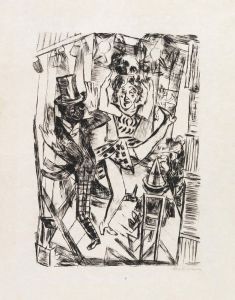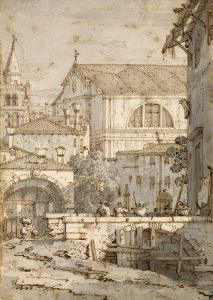
Spiral Staircase and Figures
A hand-painted replica of James Ensor’s masterpiece Spiral Staircase and Figures, meticulously crafted by professional artists to capture the true essence of the original. Each piece is created with museum-quality canvas and rare mineral pigments, carefully painted by experienced artists with delicate brushstrokes and rich, layered colors to perfectly recreate the texture of the original artwork. Unlike machine-printed reproductions, this hand-painted version brings the painting to life, infused with the artist’s emotions and skill in every stroke. Whether for personal collection or home decoration, it instantly elevates the artistic atmosphere of any space.
"Spiral Staircase and Figures" is a painting by the Belgian artist James Ensor, created in 1886. Ensor, born in 1860 in Ostend, Belgium, was a prominent figure in the Symbolist movement and is known for his unique style that often incorporated fantastical elements, satire, and a vivid use of color. His work frequently explored themes of death, masks, and the grotesque, reflecting his fascination with the absurdities of life and society.
The painting "Spiral Staircase and Figures" exemplifies Ensor's distinctive approach to composition and subject matter. It features a spiraling staircase, a motif that Ensor used to convey movement and the passage of time. The staircase is populated by a variety of figures, each rendered with Ensor's characteristic attention to detail and expressive style. The figures appear to be engaged in various activities, creating a dynamic scene that invites viewers to explore the narrative possibilities within the painting.
Ensor's use of the spiral staircase can be seen as a metaphor for the complexities and cyclical nature of life. The figures on the staircase may represent different aspects of humanity, each on their own journey, yet interconnected by the shared space of the staircase. This composition allows Ensor to explore themes of human interaction, isolation, and the passage of time, all central to his broader artistic vision.
The painting is notable for its vibrant color palette, a hallmark of Ensor's work. He often employed bold, contrasting colors to create a sense of drama and intensity. In "Spiral Staircase and Figures," the colors serve to enhance the emotional impact of the scene, drawing viewers into the world Ensor has created. The interplay of light and shadow further adds to the painting's depth, highlighting the intricate details of the figures and the architectural elements of the staircase.
Ensor's work was often met with mixed reactions during his lifetime. While some critics appreciated his innovative approach and the emotional depth of his paintings, others found his style to be too unconventional. Despite this, Ensor's influence on modern art is undeniable. His willingness to push the boundaries of traditional artistic conventions paved the way for future movements, such as Expressionism and Surrealism.
"Spiral Staircase and Figures" is a testament to Ensor's skill as a painter and his ability to convey complex themes through his art. The painting remains an important part of Ensor's oeuvre, reflecting his unique perspective on the human condition and his mastery of color and composition. Today, Ensor is celebrated as one of Belgium's most significant artists, and his work continues to be studied and admired for its originality and depth.
The painting is housed in the Royal Museum of Fine Arts in Antwerp, Belgium, where it is part of a larger collection of Ensor's works. This institution plays a crucial role in preserving and promoting Ensor's legacy, ensuring that future generations can appreciate his contributions to the world of art.





